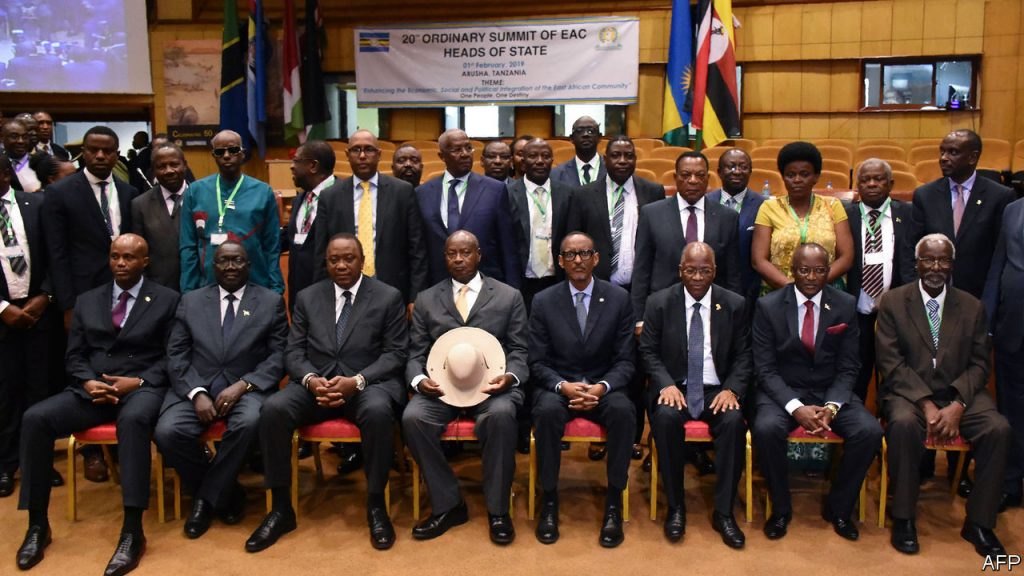Never in the history of the East African community has there been more funding than now, with the current funding for various social and infrastructural projects reaching US$3 Billion. Most of these funds have gone into inter-states projects as well as projects within a state having a regional impact.
The community has been able to achieve a tenfold increase in grants while still reducing internal expenses and costs by over 40 percent in the last four years.
Documents at our hands show that the EAC has been able to sign projects with different development agencies including Africa Development Bank, USAID, China, EU and Bill and Melinda Gates Foundation worth $547,454, 168.
These documents seem to agree with Amb Libérat Mfumukeko who has been pushing for an effective secretariat that is able to raise financing on key projects while at the same time cutting on costs. This, he has argued in the past that will boost the growth of the economy of the member states and raising the standards of living and promote interstate commerce.
Key among the projects that have already received favorable consideration include the Njinja- Kampala Expressway, which once implemented promises to reduce the time taken from Uganda’s main airport to the capital drastically. The African Development Bank’s board approved $229 million for part of the project with the rest being raised through a Public-Private Partnership (PPP).
Other projects under the laps of the EAC and receiving financing through the AfDB include the feasibility study, design and supervision of the Isaka-Kigali Standards Gauge Rail (SGR) Network Project between Tanzania and Rwanda.
Read also: With Ksh1.4B revenue Kenya, Tanzania launch Namanga Border Post(Opens in a new browser tab)
Another project is the tarmacking and expansion of the road linking Kenya’s north coast to Tanzania’s upper region. The Malindi –Mombasa –Lunga Lunga-Tanga-Bagamoyo road project is under consideration by AfDB.
With the big infrastructural projects going on, the community has also been able to raise funds for social and scientific projects that are impacting the well-being of the East African people.
Some of the projects include support for immunization programs in the East African Community in collaboration with The GAVI Alliance, Phase VII“ at a cost of $79,800,000. Others include Financing Agreement between the European Commission and the Member States of the Eastern and Southern Africa Region Programme to Promote Regional Maritime Security (MASE) and the Integrated Water Resource Management with the Lake Victoria Basin with High Priority Investments.
With an increase in grants, the EAC has however been able to rework on its expenses with a drastic fall over the last four years. The expenses mainly travel and accommodation by the EAC secretariat has fallen from a high of $17 million in 2014 to a low of $12 Million in the current financial year.
Amb Libérat Mfumukeko has been the secretary-general of the EAC since 26 April 2016 for a five-year term, replacing Richard Sezibera and has been credited with rapid improvement on the trade and development in the region.
These improvements come as the East Africans await the admission of the Democratic Republic of Congo to the EAC which will raise the population of the community to be almost a third of a billion people and a coast to coast linking the Indian Ocean to the Atlantic becoming a real force to reckon with.
DR Congo, as well as Somalia, have all sought to be included with the Arusha based organization acknowledging the potential opportunities these admissions will offer, with DR Congo bringing a sizable population of over 81 million people and a wealth of minerals. Somali also has a growing population, rich offshore oil deposits with political security the only elusive commodity.
With a land area of 2.5 million square kilometers and a combined Gross Domestic Product of US$ 193 billion, its realization bears great strategic and geopolitical significance and prospects for the renewed and reinvigorated EAC. The work of the EAC is guided by its Treaty which established the Community. It was signed on 30 November 1999 and entered into force on 7 July 2000 following its ratification by the original three Partner States – Kenya, Tanzania and Uganda.
Rwanda and Burundi acceded to the EAC Treaty on 18 June 2007 and became full Members of the Community with effect from 1 July 2007. South Sudan acceded to the Treaty on 15 April 2016 and become a full Member on 15 August 2016. As one of the fastest-growing regional economic blocs in the world, the EAC is widening and deepening co-operation among the Partner States in various key spheres for their mutual benefit. These spheres include political, economic and social.
The process towards an East African Federation is being fast-tracked, underscoring the serious determination of the East African leaders and citizens to construct a powerful and sustainable East African economic and political bloc.
